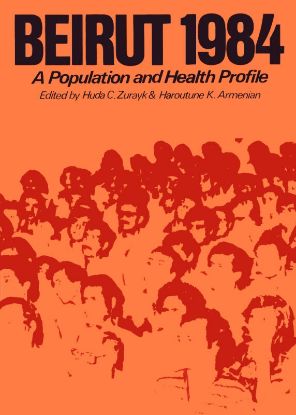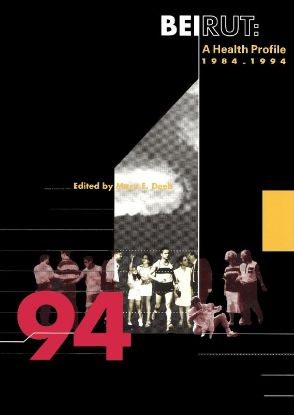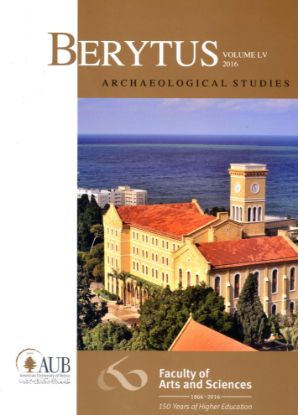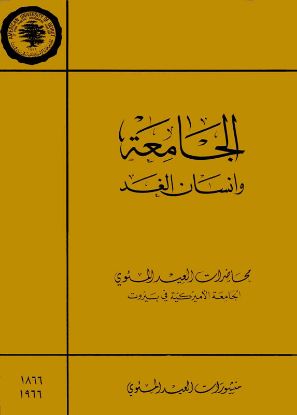Filter by price
AUB Press
Beirut 1984: A Population and Health Profile
This book incorporates the descriptive findings of a survey conducted by the Faculty of Health Sciences at the American University of Beirut as part of its efforts to establish a population laboratory in the city of Beirut. The Lebanese Civil War led to the disintegration of the crude health information system available prior to that time; thus this survey generates a unique dataset about a city and its population at a midpoint in the war. By recording the methodological and organizational issues faced during the war, the book serves as a reference source for courses and other training activities in health research. Its findings will interest public health workers, ministries of health, and the staffs of a variety of international agencies.
$10.00
Beirut: A Health Profile 1984–1994
These are the findings of a ten-year follow-up study to the “1984 Beirut." This book provides a rich array of statistics and information as well as comparative data on the population of Beirut at two different points in time. Changes in demographics and health statuses, use of health services, and the prevalence of chronic and acute diseases are assessed. In addition to providing data unique to a city that had recently experienced fifteen years of civil war, the book describes approaches useful to students of survey methodology. In a country that has lacked reliable health information systems for much of its existence, these surveys present a valuable alternative for the development of future health care services. Lists of figures and tables, chapter abstracts, and questionnaires are presented in both English and Arabic.
$10.00
Berytus Volume LV / 2016
Berytus is an international peer-reviewed journal devoted to the archaeological and ethnoarchaeological studies on Syria and Lebanon from prehistoric to Islamic times, but will also publish articles on neighbouring regions and in related fields. Berytus Archaeological Studies volumes 55 and 56 celebrate the year 2016 marking the 150th anniversary of the Faculty of Arts and Sciences of the American University of Beirut. This volume is the companion of volume 56 which appeared in the same year.
$30.00
The Determination of the Coordinates of Positions for the Correction of Distances Between Cities
This translation from the Arabic of the Tahdīd is based on Dr. P. Boljakoff's edition of the Istanbul Manuscript, Sultan Fatih No. 3386, published in 1962 by the Cultural Department of the Arab League in Cairo. The text deals with geographical-mathematical subjects, the determination of latitude, the obliquity of the ecliptic, the measurement of time, lunar eclipses, longitudinal differences, and methods for the determination of the Qibla, the direction of prayer for Muslims. Please note that this book has signs of wear and aging.
$10.00
الجامعة وانسان الغد Al-Jamiʿa wa lnsan al-Ghad
This is a collection of seven papers from a 1967 lecture series of the same title, organized in celebration of AUB's 100th anniversary. The lectures examines the subject of “the university" from different viewpoints, drawing upon the experiences of the past to provide guidelines for the future. The authors – AUB professor of education and former president of the University of Baghdad, Matta Akrawi; former Harvard University president, James Bryant Conant; vice-chancellor of the University of Ibadan, Nigeria, K. Onwuka Dike; director general of UNESCO, Rene Maheu; director of the National Institute for Medical Research in London, Sir Peter B. Medawar; president of Harvard University, Nathan Pusey; and Columbia University professor of physics, Chien-Shiung Wu – discuss the university with regard to its international responsibilities, the role it plays in developing nations, its philosophy of education, and the significance of its research.
$6.00
Berytus Volume LVII-LVIII / 2017-2018
Published since 1934 by AUB’s Faculty of Arts and Sciences, Berytus is an international peer-reviewed journal devoted primarily to archaeological, ethnoarchaeological, and historical studies on Lebanon and Syria from prehistoric to Ottoman times. Several recent volumes have been devoted to publishing the results of excavations undertaken in the Souks area of the Beirut Central District by the American University of Beirut in association with the Archaeological Collaboration for Research and Excavation (ACRE) between 1994 and 1996. Since 1964, Berytus has been published either annually or biennially.
$30.00






